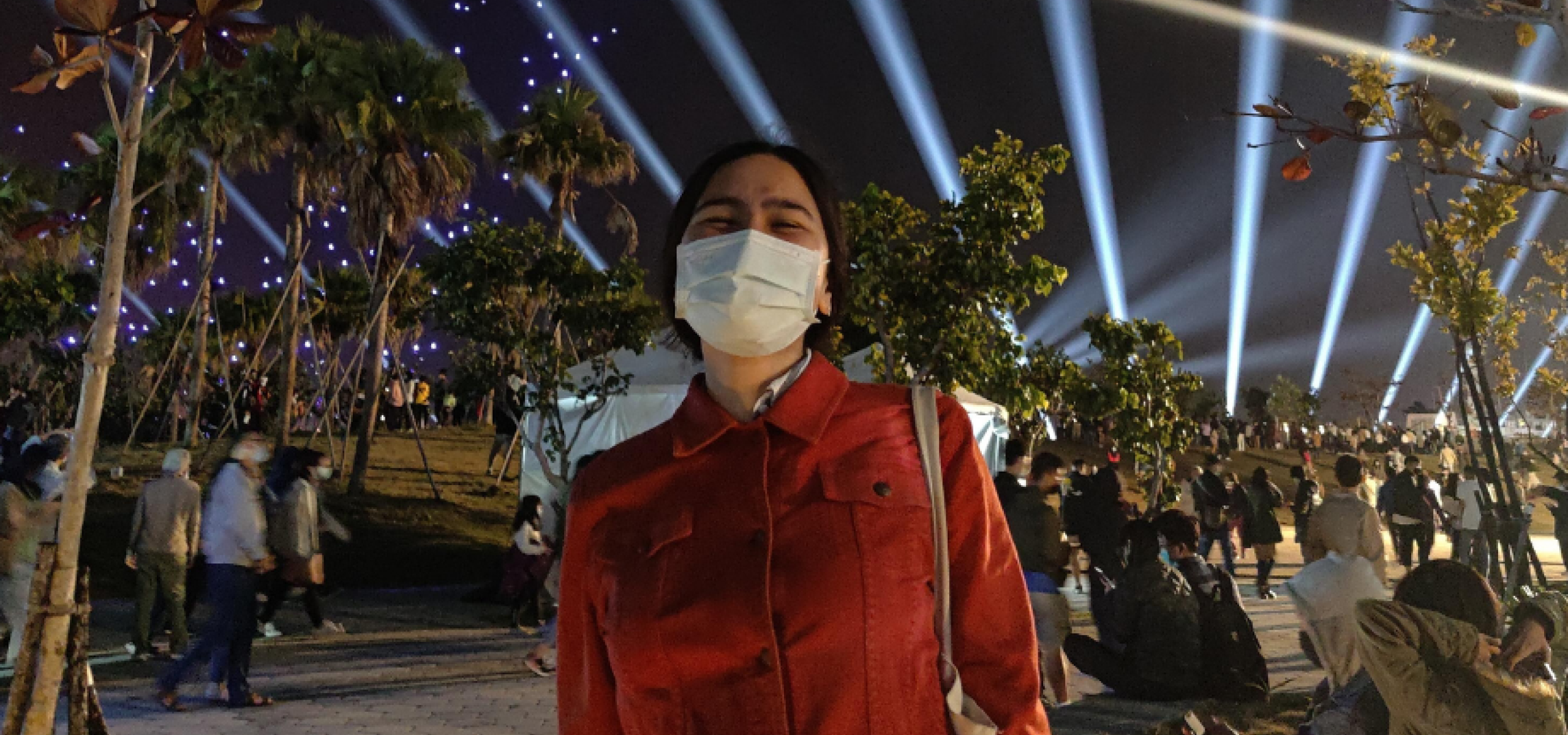
Cherish Tay is currently studying at the National Sun Yat-Sen University and will start her Australian Government New Colombo Plan Scholarship with a law exchange at the National Taiwan University in September.
Though I had studied Mandarin at ANU before coming to Taiwan, with little opportunity to practice the language, I was quite literally lost for words when I first arrived.
Editor’s note: Ever wondered what it’s like to study abroad? ANU Law student ambassador Cherish Tay gives us the low-down on her adventures and experiences studying in Taiwan in her new blog series.
By Cherish Tay (student ambassador)
Being in Taiwan right now still partly seems like a dream. I feel that at any moment I will wake up and be back in my bedroom in Canberra taking classes online, as has been the status quo for the past two years.
In 2020, I was one of many exchange and international students around the world who had their plans drastically altered by the pandemic. So, it took something more than a passing interest in the place to defer my studies and take off to Taiwan in November 2021, despite the border restrictions, quarantine requirements, air travel uncertainty, and general caution and nerves associated with moving countries.
My plan is to do six months of language study here under the Taiwan Ministry of Education’s Huayu Mandarin Language Scholarship, which is why I am currently at the National Sun Yat-Sen University in Kaohsiung.
I then hope to start my Australian Government New Colombo Plan Scholarship with a law exchange at the National Taiwan University in Taipei in September, with the goal of researching legal responsiveness and law reform practices.
After that, my plans remain uncertain and I’m excited to see what opportunities lie ahead.
However, the first step of my plan is to tackle the language barrier.
Though I had studied Mandarin at The Australian National University (ANU) before coming to Taiwan, with little opportunity to practice the language, I was quite literally lost for words when I first arrived.
In the quarantine taxi ride from the airport in Taoyuan to Kaohsiung, I clumsily attempted to make conversation with my taxi driver. This kindly Taiwanese uncle did his best, but the confusion was such that, although my university is one of the largest in Taiwan, he didn’t recognise the name when I said it.
We fell quiet and the rest of the four-hour drive passed in this way. This was the sum of my first interaction in Chinese in Taiwan, not a dumpster-fire failure, but not the picture of fluency and cross-cultural communication I had dreamt of either.
I’m here studying Guoyu(國語)aka Taiwanese Mandarin, which is written with traditional characters. This has been the entry into a whole new realm of my Chinese language learning journey, as I studied Putonghua(普通話)at ANU. Putonghua(普通話)is standard Mandarin, which uses Beijing-speech as its basis and is written using simplified characters.
Kaohsiung, the city I have been living in for now nearly three months, is a melting pot of language and culture. Not only is Taiwanese or Minnanyu(閩南語)spoken by many more people here than it is in Taipei, it is also linguistically distinct from central and northern Taiwanese.
Additionally, Kaohsiung has the largest population of Hakka speakers in Taiwan. As a result, it’s not uncommon to hear particularly the elder generation speaking Taiwanese when buying vegetables at the market or when with family.
A couple of weeks ago I stopped by a fruit stall at the market to pick up some bananas. The stall owner told me the price in Taiwanese and, surprising even myself, I understood and quickly paid.
Though I wasn’t able to respond in Taiwanese, I gave her a big smile and said in Mandarin my best ‘thank you’ — not just for the bananas or even for showing me the complexity of language and culture here in Kaohsiung, but also for making me realise that my own linguistic tapestry is changing and growing in a way I could never have imagined a few months ago.
